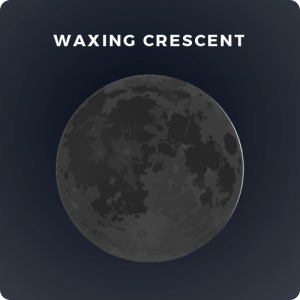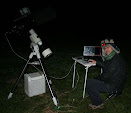Active: November 6—30; Maximum: November 17, 22h00m UT (nodal crossing
at λ⊙ = 235.27°), but see text; ZHR = 15?;
Radiant: α = 152°, δ = +22°; Radiant drift: see Table 6;
V∞ = 71 km/s; r = 2.5;
TFC: α = 140°, δ = +35° and α = 129°, δ = +6° (β > 35° N);
or α = 156°, δ = −3° and α = 129°, δ = +6° (β < 35° N).
IFC: α = 120°, δ = +40° before 0h local time (β > 40° N);
α = 120°, δ = +20° before 4h local time and α = 160°, δ = 0° after 4h local time (β > 0° N);
α = 120°, δ = +10° before 0h local time and α = 160°, δ = −10° (β < 0° N).
El máximo se prevee para las 22h00 UT estando el radiante está muy bajo en el horizonte para nuestras latitudes, por lo que desde la península no podremos disfrutar de dicho máximo.
Explicación de abreviaturas:
- α, δ: Coordinates for a shower's radiant position, usually at maximum. α is right ascension, δ is declination. Radiants drift across the sky each day due to the Earth's own orbital motion around the Sun, and this must be allowed for using the details in Table 6 for nights away from the listed shower maxima.
- r: The population index, a term computed from each shower's meteor magnitude distribution. r = 2.0—2.5 is brighter than average, while r above 3.0 is fainter than average.
- λ⊙: Solar longitude, a precise measure of the Earth's position on its orbit which is not dependent on the vagaries of the calendar. All λ⊙ are given for the equinox 2000.0.
- V∞: Pre-atmospheric velocity of shower meteoroids, given in km/s. Velocities range from about 11 km/s (very slow) to 72 km/s (very fast). 40 km/s is roughly medium speed.
- ZHR: Zenithal Hourly Rate, a calculated maximum number of meteors an ideal observer would see in perfectly clear skies with the shower radiant overhead. This figure is given in terms of meteors per hour. Where meteor activity persisted at a high level for less than an hour, or where observing circumstances were very poor, an estimated ZHR (EZHR) is used, which is less accurate than the normal ZHR.
- TFC and IFC: Suggested telescopic and still-imaging (including photographic) field centres respectively. β is the observer's latitude ('<' means 'south of' and '>' means 'north of'). Pairs of telescopic fields must be observed, alternating about every half hour, so that the positions of radiants can be defined. The exact choice of TFC or IFC depends on the observer's location and the elevation of the radiant. Note that the TFCs are also useful centres to use for video camera fields as well.
The most recent perihelion passage of the Leonids’ parent comet, 55P/Tempel-Tuttle, in 1998 may be more than 15 years ago now, but the shower’s activity has continued to be fascinatingly variable from year to year recently. This year seems unlikely to produce enhanced rates, but there may be more than one peak. Mikhail Maslov has suggested the nodal maximum could happen around 16h UT on November 17, rather than at the time given above, producing ZHRs of ∼ 10–15, while J´er´emie Vaubaillon has indicated the Earth could encounter the 1567 AD Leonid dust trail at 09h17m UT on November 21, albeit he noted too that ZHRs might prove undetectable from this event. November’s waning crescent Moon, at last quarter on the 14th, means virtually no moonlight interference on either date. The Leonid radiant first becomes usefully-observable by local midnight or so north of the equator, afterwards for places further south, and all observing methods can be employed. While these potential maximum timings do not exclude all others, if they prove correct, the two November 17 ones would be best-detectable from east Asian to western Pacific longitudes (∼ 16h peak), and east European to central-eastern Asian longitudes (22h maximum), while that on November 21 would be similarly available from places at North American longitudes.
Con la esperanza de detectar un pico secundario podemos observar toda la noche (si el tiempo atmosférico lo permite) del 17 de noviembre y la del 21 de noviembre.
El desplazamiento en AR y dec del radiante es el siguiente a lo largo del mes de noviembre:
| Nov 5 | LEO | ||||||
| Nov 10 | 147° +24° | ||||||
| Nov 15 | 150° +23° | ||||||
| Nov 20 | 153° +21° | ||||||
| Nov 25 | 156° +20° | ||||||
| Nov 30 | 159° +19° | ||||||
| Dec 5 | 122° +3° | ||||||
| Dec 10 | 126° +2° | ||||||



No hay comentarios:
Publicar un comentario